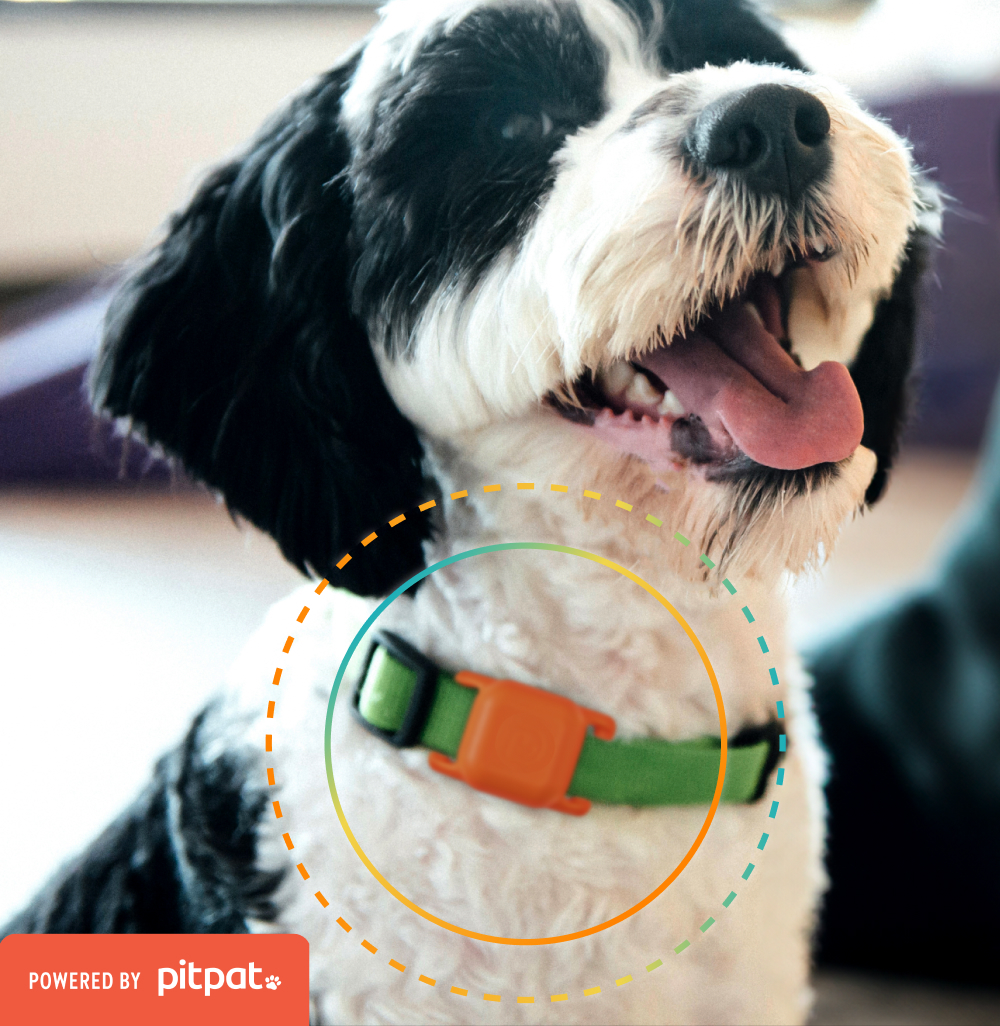Expert Advice: Dog Allergies

Lorraine Rhoads, Dogtopia’s Environmental Biologist, recently led a Facebook Live session on dog allergies. Tune in below to watch Lorraine discuss the types of dog allergies, how different environments affect them, and what you can to do alleviate your pup’s symptoms.
Did you know that dogs get allergies too? As the weather begins to warm all across the country, we thought it would be important to discuss canine allergies!
What’s interesting is that dogs can be allergic to the very same pollens and other allergens as humans, but they symptoms can be different or harder to spot. For us, we usually come down with sneezing, coughing, watery – itchy eyes, some people can develop rashes if they have sensitive skin. Well dogs don’t have the same upper respiratory system and sinus cavities that humans do, so more often allergy symptoms affect their skin.
Allergy Symptoms
Warm spring air brings pollen! Trees, shrubs and flowers are beginning to bloom which will soon lead to itchy pups. Dogs primarily get allergies and have itchy skin around their eyes, ears, foot pads and near their bottom or hind end.
Mild symptoms may be:
- Itchy back or base of tail (most commonly flea allergy)
- Increased scratching
- Itchy ears and ear infections
- Itchy, runny eyes
- Sneezing
Moderate to severe symptoms are:
- Itchy, red, moist or scabbed skin
- Paw chewing/swollen paws
- Snoring caused by an inflamed throat
- Constant licking
- Vomiting – more common with food allergies
- Diarrhea – more common with food allergies
- Secondary bacterial infections
- Yeast infections may develop easier
You may be asking, “Are there certain plants, foods, environmental factors I should avoid if my pup has allergies?”
The answer: Yes!

A few common allergens include:
- Grass and weed pollens –
- Many people and dogs are allergic to pollen that comes from grasses. Bermuda is one of those grasses. Here’s an example of the inflorescence or flower top of the grass. This is where the pollen comes from. Often times we mow or cut our grass before the flower heads develop. Grass pollen is microscopic and can float through the air without you being able to visually see it. Some grasses like Bermuda can release pollen, even if it’s kept short. Ask for a hybrid grass species that is more allergy friendly.
- Quick mention of Foxtails here! Grasses that make sharp pointy seed heads can be commonly referred to as foxtails. This is because they seed heads are easily picked up while out walking on your pup’s coat. Once attached, the seed usually moves deeper and deeper into the skin (due to your dog’s muscle movement) and can cause tremendous pain and discomfort and even a terrible infection. Foxtails have been known to work their way all the way down an ear canal, create an abscess or even find their way into an internal organ! So, while these are not a type of grass that causes inhaled allergies in the same way as other grasses, it’s important to mention the danger of this type of grass while we are discussing grass plants.
- Weeds like Russian Thistle (tumbleweed), Pig weed, Rag weed
- Bottlebrush plants – pollen is tiny and needle sharp, it will stick to coat causing reactions like itching, sneezing and coughing
- Tree (Maple, Juniper, Elm, Mulberry, Pecan, Oak, etc)
- Lily family – daffodils, narcissus, tulips, and agapanthus – there are no types of lilies that are safe for dogs (or cats for that matter)
- Mold spores
- Dust and house dust mites
- Dander
- Feathers
- Cigarette smoke
- Food ingredients (e.g. beef, chicken, pork, corn, wheat or soy) – this may take some work to find out exactly what may be causing this. Work with your vet if food allergies are suspected, you may need to do an elimination diet.
- Prescription drugs
- Fleas and flea-control products (Only a few flea bites can trigger intense itchiness for two to three weeks!)
- Cleaning products
- Insecticidal shampoo

This list may seem long, but here are some plants that don’t typically irritate dogs’ allergies:
- Marigolds
- Dahlia
- Bamboo
- Some ornamental grasses – Liriope (Super Blue)
- Bromeliads
- Succulents
- Catnip
None of these plants should be consumed, they are only on the list as plants that have reduced allergens.
If your dog suffers from allergies, here are a few steps to follow:
Take a trip to the vet!
It’s important to address your dog’s seasonal allergies with your veterinarian. Untreated allergies can lead to serious skin infections or ear infections not to mention that your pup is probably just miserable and I bet keeping you up at night with scratching and licking.
Your vet will perform an examination and may determine a course of action that could include medication or special bathing procedures. If your pup continues to suffer, a trip to the veterinary dermatologist may be next. Dogs may need to have an intradermal skin test, similar to the human allergy test that is series of tiny pricks to test for an immediate allergic reaction.
Just a quick note about food allergies since we are focusing mostly on environmental allergies in today’s blog: The only way to truly diagnose a food allergy is to work with your veterinarian and feed your dog a prescription protein diet exclusively for about 12 weeks. During this time, it is critical that your dog’s diet cannot be contaminated with anything like treats, table food or even flavored medication. The goal of this kind of diet is to wait for all the food allergy symptoms to go away, then gradually reintroduce old foods one at a time to see which ones may cause an allergic reaction.
With all of this being said, you don’t have to keep your dog locked inside during the spring.
Here are a few things you can do to relieve the itch:
- Stay inside and keep windows closed during windy days to avoid allergy triggers!
- After playtime, especially on grass, wipe down your dog’s paws before they come inside. This will remove lots of allergens and keep their bedding clean.
- Try grass species that don’t release pollen until they are tall – like 12” or taller. Rye grass and fescue are better for allergies.
- Bathing once every 1-2 weeks is a good way to reduce the pollen and other irritants in the coat. Use a hypoallergenic shampoo such as:
- Relief – Shampoo contains pramoxine which is used to relieve itching and the discomfort of skin irritation. It also contains colloidal oatmeal, which is used to soothe and condition the skin. When you use a medicated shampoo, check with your veterinarian first and follow the directions carefully. For example, the shampoo may need to stay on for 5-10 minutes to be effective at providing relief.
- Fresh ‘n Clean Skin & Coat Essentials uses Omega Fatty Acids to sooth and hydrate skin.
- Nootie makes a good shampoo as part of their Dermatology Solutions line called – Medicated Oatmeal Dog Shampoo Anti-ITCH Maximum Strength Formulation With 1% Lidocaine HCL 1% Pramoxine HCL and Colloidal Oatmeal
- Keep your pup FLEA FREE! Before the warm season is here, begin flea prevention treatment.
- Topical Medications – Frontline, K9 Advantix, Parastar, Revolution, Vectra 3D
- Oral Medications – Bravecto, Nexgard, Simparica, Trifexis
- Flea Shampoos – need to contain Pyrethrins or Permethrins to be effective.
- Keep your home dust free with regular vacuuming, include those curtains and rugs in your cleaning regimen. Washing dog bedding regularly is important too! Change your air filters regularly!
- Increase the fatty acids in your pup’s diet with fish oil supplements. This may reduce inflammation and improve skin and coat.
- Medications like Benadryl (diphenhydramine only) can be helpful, following the advice of your veterinarian, but may only benefit a small percentage of dogs with allergies. Your vet can prescribe other medications that maybe helpful. The use of steroids should be reserved for the most severe cases.










